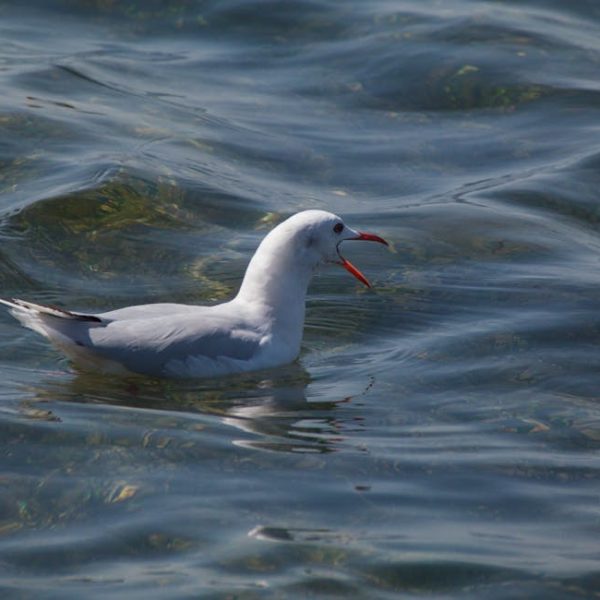Our natural world is filled with sights so tranquil, they beckon us to leave behind the hullabaloo of everyday life and take a moment to simply observe. Among such sights is that of birds sunning themselves, basking in the glow of the midday sun, seemingly lost in a world all their own – an engaging spectacle that stirs the curiosity in each one of us.
Understanding The Behavior of Birds in Sunlight
Birds have long been known to enjoy the sun, often seen ‘sunning’ themselves during the day, particularly around midday. The sight of them spreading their wings wide, feathers all splayed out as they soak up the rays, is wonderfully calming. The fundamental motivation behind this behavior varies from species to species, although there are largely shared reasons. Some species, like crows and sparrows, are more prone to this behavior than others.
For birdwatchers seeking to capture these soothing moments, midday is generally the best time to spot birds sunbathing since it is when the sun is at its highest.
The Science Behind Sunbathing Birds
On the scientific front, bird sunbathing serves multiple profound purposes. The sunlight aids in the synthesis of vitamin D, essential for their health. Thermoregulation is another factor, where birds use the sun’s heat to regulate their body temperature. Furthermore, sunbathing is seen as a potential mechanism for parasite control, as the heat helps birds rid themselves of lice and other pests.
While sunbathing presents many benefits, it’s not without its downsides. For example, excessive sun exposure can lead to overheating. For pet bird owners, it’s important to provide sunning opportunities in a safe, controlled environment – a semi-shaded area is perfect, ensuring your bird gets just enough sunlight without risk of overheating.
Detecting the Subtleties in Bird Sunbathing Behavior
Bird sunbathing is not a mundane act; rather, it’s filled with intriguing subtleties. Every species adopts different sunning positions- some sprawl on the ground, some fan their wings, while others lie on their sides. Each pose indicates a unique aspect of their behavior, health, or mood.
As a birdwatcher, acquainting yourself with these behaviors is imperative. It not only enhances your birdwatching experience but also allows you to respond appropriately in case a bird is in distress.
Case Study: Observing Two Birds Chilling in the Midday Sun
Consider the tranquil scene of two birds – let’s say a pigeon and a dove – enjoying the midday sun. Their sunning behavior, interactions, and overall demeanor can inform us about their species-specific sunning practices, social dynamics, and much more.
Observing them side by side presents a fascinating study in contrasts. Pigeons, for instance, might prefer sprawling on the ground with wings extended, while doves might choose a perch, fanning their feathers wide.
Such serene observations not only expand your birdwatching knowledge but also provide an avenue for much-needed tranquility in today’s fast-paced world. Hence, the value of such moments extends beyond the bounds of birdwatching, transforming into a form of mindful meditation.
Transforming Birdwatching into a Mindful Activity
Transforming your birdwatching into a form of mindfulness is not an arduous task. It requires a shift in focus, from simply observing to immersing oneself in the experience. By attending to the tranquilities of the natural world, like ‘two birds chilling in the midday sun’, birdwatching becomes more than just a pastime. It evolves into a mindful and meditative activity, helping us attain inner peace.
Here are some steps to enhance mindfulness during birdwatching:
- Be conscious: Pay attention to not just the bird’s actions, but also the surroundings, sounds, smells and the interplay of light and shadows.
- Observe without judgment: Accept the moment as it is without trying to change or critique it.
- Be patient: Allow the experience to unfold naturally. Do not rush through it.
- Breathe and relax: Focus on your breath, observe the rise and fall of your chest. This helps in grounding yourself in the present moment.
It’s equally important to keep in mind some best practices for mindful birdwatching:
- Go digital-free: Try and keep electronic devices to a minimum. Use this time for relaxation and connection with nature.
- Embrace the moment: Even if you don’t spot any birds, embrace being in nature with a clear and calm mind.
- Respect the bird: Avoid disturbing the birds. Enjoy the privilege of being their silent observer.
In conclusion, birdwatching is not just about scrutinizing our feathered friends. It is an opportunity to escape the noise of our daily lives and appreciate the tranquility that nature offers, even if it’s just from observing ‘two birds chilling in the midday sun’. Thus, birdwatching, when done mindfully, can prove to be a tranquil and enlightening process that rejuvenates your body, mind, and soul.
Key Takeaway:
- Birds sunbathe for useful reasons such as vitamin D synthesis, thermoregulation and parasite control.
- Different bird species exhibit unique sunbathing positions and behaviors.
- Observing these behaviors can show insights on their health, mood or social dynamics.
- Birdwatching, particularly observing birds enjoying the sunlight, can transform into a mindful and therapeutic activity.
- Enhancing mindfulness in birdwatching involves conscious observation, non-judgmental acceptance, patience and relaxation in response to the environment and birds’ behaviours.
Birdwatching is not only a hobby but potentially, a path of mindfulness and escape from the daily life turmoil. Engrossed in the enchanting sight of birds basking under the sun, one can find tranquility, meaning and a deeper connection to nature. It arouthes relaxation and enhances observation capacities, making this pastime a spoonful of relief in your stressful days.
FAQs
Q: How does bird sunbathing differ from human sunbathing?
A: The main difference lies in the purpose. While humans sunbathe primarily for relaxation and a tan, birds do it for vital health reasons like vitamin D synthesis, managing body temperature and parasite control.
Q: Are certain bird species more likely to sunbathe than others?
A: Yes, certain species like crows and sparrows are more prone to sunbathe than others. However, the majority of bird species have been observed participating in some form of sunning behavior.
Q: Can observing sunbathing birds contribute to scientific knowledge?
A: Definitely. Observing bird sunbathing behaviors can enlighten us on their health status, moods, social dynamics, and even insights into species-specific behaviors.
Q: How can I practice mindfulness through birdwatching?
A: By shifting your focus from merely observing to immersing yourself fully in the experience, you can transform birdwatching into a form of mindfulness. Pay acute attention to the surroundings, sounds, light interplays and the bird’s actions. Accept the spectacle without judging or trying to modify it.
Q: Is it safe for my pet bird to sunbathe?
A: Yes, it is crucial for the health of your pet bird. But ensure it’s done in a safe and controlled environment. Try to provide a semi-shaded area so your bird gets enough sunlight without the risk of overheating.
We encourage you to share this article with fellow birdwatching enthusiasts and explore more posts on our website to enrich your avian knowledge.












